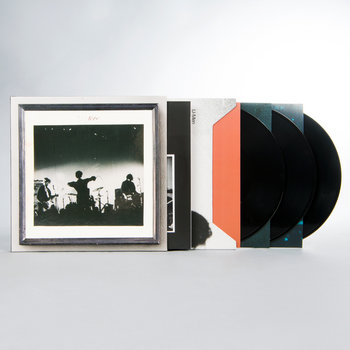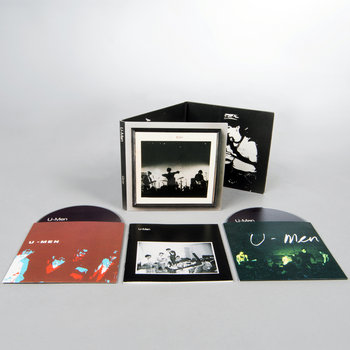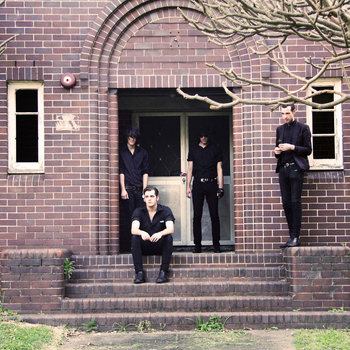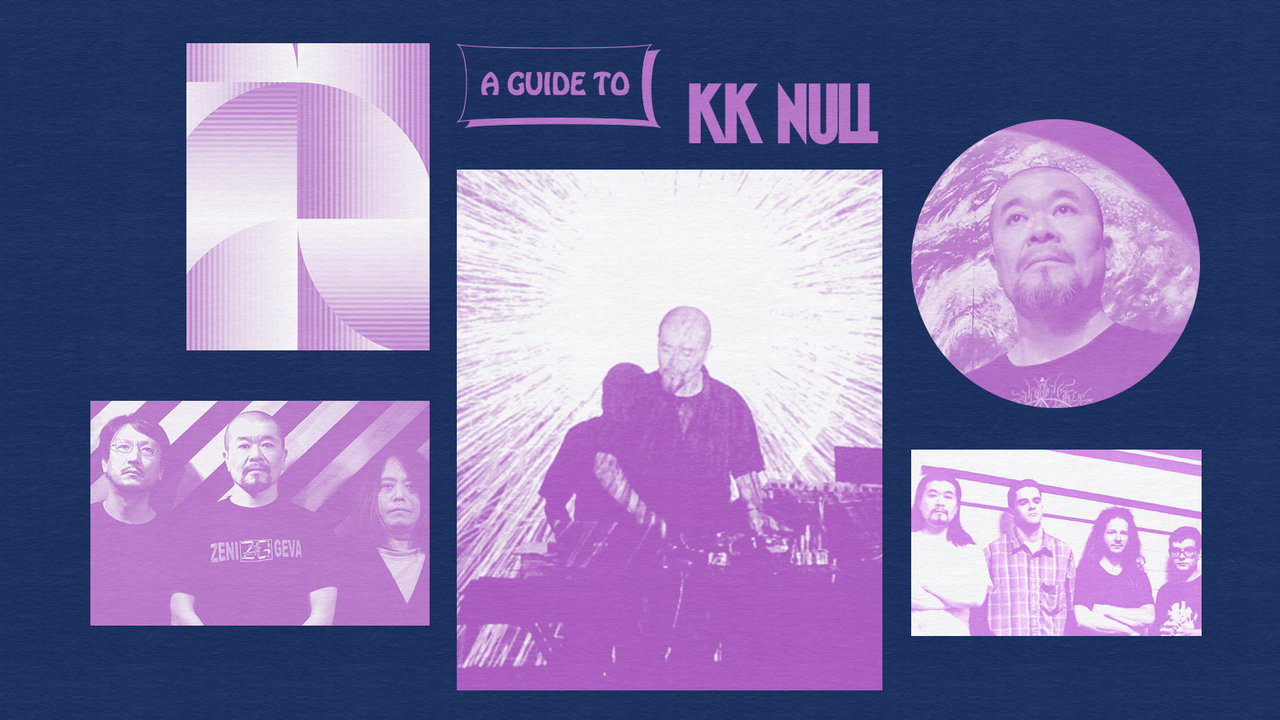
The call went out to the people, straight from the mouth of the wild-haired singer, a question that had never been asked, not quite like this: “Hands up, who wants to die?” And just like that, a legion of youths raised their hands, eager to grasp at any experience as if it was their last day on earth.
Found on 1983’s The Bad Seed EP, “Sonny’s Burning” is a skeleton key to the Birthday Party’s treasure chest. After that attention-hijacking opening line, the song erupts into a spasm of psychosexual fury as Tracy Pew’s sinister bass lunges at the listener under the cover of Mick Harvey’s relentless beat, Rowland S. Howard’s guitar hanging in the air like a vengeful ghost. Nick Cave, the torched singer, leads the charge with frantic interjections expelled in grunts and gasps. Cries of ”Flame on!” and “Don’t interrupt!” ring out like a Greek chorus stumbling about after stabbing out its own eyes.


The dramatic irony that runs rampant through “Sonny’s Burning” encapsulates the essence of what made the Birthday Party such a ferociously original band. From their founding as the Saints-loving lads Boys Next Door to the subsequent name change and influence of bands like Pere Ubu and the Pop Group, the Birthday Party never lacked for intensity. But what is often unrecognized when considering the Birthday Party is that they were gut-bustingly hysterical, metaphorically if not almost-literally.
With Cave caterwauling like a demented Samuel Beckett character, “Yard” is a ghastly rendition of a nursery rhyme, a school trip to the slaughterhouse, simultaneously hideous and droll. “Cry” finds Cave mocking his own broken heart, while “Release The Bats” takes the piss out of a scene that the Birthday Party helped spawn. Cave is a contortionist with his voice, adopting one character’s skewed perspective for a line or two and then shedding it for another’s before the stanza is over. He switches back and forth between melodrama and ridicule, derision and glee, aching longing and revenge fantasy. On tracks like “Dim Locator” and “Figure of Fun,” the band matches Cave’s madcap bluster with punch-drunk punk-jazz, Howard’s guitar lines stinging like a lion tamer’s whip. In the Birthday Party’s hands, sarcasm and surrealism are wielded like weapons, but they were more than just a fire-breathing circus act.
To the casual observer, there may appear to be little daylight between a widely emulated band such as the Cramps and the Birthday Party. But where the Cramps was a rockabilly group mutated by atomic radiation, the Birthday Party was a complete world-view encased in the skin of a junk-addled mystic whose hobbies include picking at scabs and screaming at God. Come 1980, when they relocated from Melbourne, Australia to London, England, the Birthday Party was deep in the woods of a mania of their own devising. Shunned by the mainstream music industry, destitute and drug-addicted, the Birthday Party’s live shows descended into spectacles of audience-baiting and self-inflicted violence, blending the two impulses until no one knew where intention began and reaction ended. The recent documentary Mutiny In Heaven (2023) makes explicit the Birthday Party’s live power and the profound impact they had on a generation of in-the-know punks seeking to dangle themselves from the nearest edge. Much like Joy Division, the Birthday Party provided an archetype for how a band could be more than just a rock ‘n’ roll group. This band could be your life, maybe even your death, and—if influence is a manner in which we live on—a ticket to immortality.
Stylistically, the Birthday Party covered a lot of ground. From the nightmarish psychedelia of “The Friend Catcher” to the love-mad derangement of “Zoo Music Girl,” from the delirious grind of “King Ink” to the shattered ballad of “She’s Hit,” the Birthday Party had a fearless approach to songwriting. In their wake, bands would grab ahold of one of these forms and attempt to sculpt it into something they could claim dominion over. Even if they fell short, the effort often yielded something distinct. The Birthday Party forcefully shed the anxiety of influence so that their innovations could live on.
Here are some of the Birthday Party’s most faithful disciples on Bandcamp.
Inca Babies
Rumble


Emerging hot on the heels of the Birthday Party’s demise, Inca Babies’s 1984 debut album may be named for Link Wray’s definitive rock ‘n’ roll instrumental, but Inca Babies were completely in thrall to the Birthday Party. Renfield to the Birthday Party’s Count Dracula, the bats had been released and they bit each of the Inca Babies in their cribs. With their rolling drum patterns and singer Mike Keeble’s hairstyle scaled beyond Cave-ian heights, the devotion is slavish, but the commitment has a workman-like appeal. If the music wasn’t delivered with such passion and aplomb, it would be wax museum-like, borderline offensive. But here’s the rub—this was still a new subgenre. There’s always room on the broom, especially in the early going. “The Judge” demonstrates an increasing mastery of the form, Keeble’s vocals a painstaking recreation of Cave’s snake-handling preacher persona.
Plutonium



Compact Disc (CD)



As Inca Babies progressed, they settled into a style that resembled the Gun Club’s version of punk noir. When Keeble left prior to the Opium Den album, guitarist Harry Stafford took over vocals, and it’s startling how much of the character is retained. Stafford drops Keeble’s madhouse glint and, in typical fashion, resembles Cave’s toned-down singing on contemporary Bad Seeds recordings. Since reforming in 2007, Inca Babies have released four albums.
The Midnight Choir
Halleluya?


Some of the most ardent followers of the Birthday Party cut their homage with an equally large dose of a different post-punk titan. In the Midnight Choir’s case, they looked to their countrymen the Fall for inspiration. Founded in Sheffield out of the ashes of Artery, the Midnight Choir’s music was a cyclone of sarcastic wit tinged with the melancholy of imminent doom. Original singer Dave Loukes died in a motorcycle accident, casting an uneasy pall over a track like “Motorbike.” He was replaced by Ziggy Senkans and the band soldiered on, putting out a series of excellent albums such as Worm Belly Grin, which splits itself between Birthday Party-style tracks and note-perfect Fall tributes like “Rip It.” Unreleased until 2013, Berserker Joe collects the Midnight Choir’s final recordings with a Peel Session and shows the band hitting on all cylinders.
Cat Wax Axe Co.
“Old Poker”
Fever Records may be best remembered for putting out the second My Bloody Valentine record (1986’s Geek!), but they also released the impeccably named Cat Wax Axe Co. On its 1984 EP 25 Gallons of Paranoia, the band unleashes four examples of rabid, bloodcurdling Birthday Party worship. The following year, Fever added fellow Birthday Party enthusiasts Gasrattle to the roster (sadly, their album Artshit is not on Bandcamp at the present time).
U-Men
U-Men


Vinyl LP, Compact Disc (CD)


Seattle’s U-Men are the perfect example of a pioneering scene band that was equally inspired by the Cramps and the Birthday Party. By turns camp and goth, U-Men came out of the Northwest ready to be cast as Rock Band From Hell in a John Waters movie. Singer John Bigley possessed a voice that echoed Cave’s, seesawing between a sonorous baritone, a carnival barker’s exaggerated pleading, and a banshee’s shriek. It’s no wonder the grunge scene exploded after U-Men disbanded—they had big shoes to fill.
Scratch Acid
The Greatest Gift


The Jesus Lizard bludgeoned the Birthday Party’s nihilistic dirges into a pugilistic frenzy, but where the Birthday Party aspired to the Stooges’ streetwise snarl, the Jesus Lizard came by it naturally. But it all started years earlier in Austin, Texas, with Scratch Acid. During the Birthday Party’s 1983 spring tour of the States, singer David Yow and bassist David Wm. Sims saw them in Dallas and ended up hanging out with Cave and Howard by pretending they had a fanzine. Scratch Acid siphoned off the Birthday Party’s lunatic ravings, framing the lurid subject matter with a cowboy swagger. Yow must have taken “Big-Jesus-Trash-Can” as both inspiration and challenge. After all, Scratch Acid plied its furious rock music under those “glorious singing stars of Texas!” And at the very least, God gave him hex appeal.
Laughing Hyenas
Merry Go Round


In 1983, American hardcore punk was peaking, and so was the Birthday Party on their second and final U.S. tour. As their influence spread, it fused with the ascendant subculture, sucking punks into its vortex of extreme sound and performance. Live, “Dead Joe” hit as hard as Black Flag and tapped into a vein of aggression that most hardcore thrash bands could only aspire to. Fresh from fronting one of the genre’s most explosive units, Negative Approach, John Brannon joined with guitarist Larissa Strickland to form Laughing Hyenas. The band Larissa had been singing for, L-Seven, opened the Birthday Party’s Detroit show, and the couple was so inspired that they moved to Ann Arbor and began woodshedding in their basement. In the Hyenas, Strickland’s Howard-like guitar pierces the rhythm section’s muscular grooves as Brannon wrestles with his savage roar like he is giving himself an exorcism. On “Dedications to the One I Love,” the band speeds up the bass/drum groove of “Hamlet (Pow, Pow, Pow)” and turns it into an aching plea.
Pop. 1280
The Grid


Pop. 1280 came around just in time, providing a much-needed glance back to New York City’s bad old days during the Brooklyn-led loft-pop boom of 2009–2010. After the notice-posting “Bedbugs” single, The Grid cemented Pop. 1280 as one of New York’s finest. As “Anonymous Blonde” makes apparent, Pop. 1280 was the latest in a long line of the Birthday Party’s most fervent admirers. By adding electronics to their grinding urban squall, Pop. 1280 followed in the footsteps of progenitors like Cop Shoot Cop, eventually dodging the Birthday Party’s shadow and fully embracing their cyberpunk identity.
Slug Guts
Howlin’ Gang



Vinyl LP

Crawling out of Brisbane, Australia, Slug Guts kicked up dust as the continent’s finest Birthday Party tribute. Lacking the vocal pyrotechnics of the Birthday Party’s most devoted acolytes, Slug Guts mined the depths of Tracy Pew’s distinctive bass playing, along with a sartorial sense that referenced their heroes. Slug Guts tapped into the outlaw mythology that the Birthday Party drew from, flashing six-inch gold blades and dancing “The Diseased Stranger’s Waltz” that Inca Babies sang about. Three decades on, Slug Guts proved that the Birthday Party’s feral charisma still bewitched a younger generation.
The Birthday Party’s influence endures, in part because they presented so many different faces to the world. They were violence-prone brutes and sensitive poets, avant-garde weirdos and rock ‘n’ roll aesthetes, primal sound purveyors and students of music history. The Birthday Party was able to reconcile these contradictions because, whether in the studio or on the stage, they gave no quarter and asked for none in return. The band seemed to fear no one, including themselves, perhaps the most frightening people they knew. The Birthday Party gazed into the abyss, and they saw a mirror, reflecting back.







